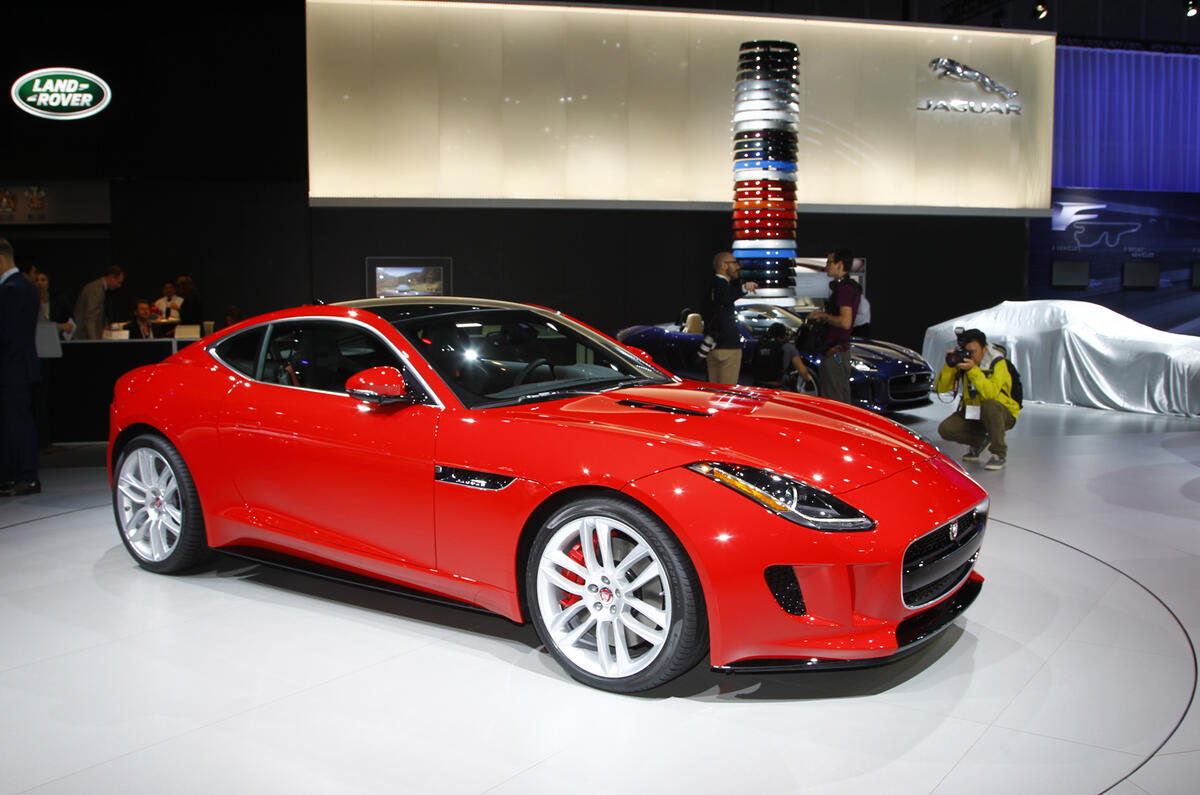This is the Jaguar F-type coupé, a car that its maker calls the most dynamically capable, performance-focused production car it has ever built. It also significantly undercuts the convertible version on price in base form.
The entry-level coupé and coupé S closely mirror the performance spec of the V6 roadster range, but the range-topping F-type R coupé is heavily modified. It is powered by the 542bhp supercharged 5.0-litre V8 used in the XKR-S and XFR-S, as well as the Project 7 concept seen at Goodwood this year. The R coupé accelerates from 0-60mph in 4.0sec and has a governed top speed of 186mph. Its power-to-weight ratio is 325bhp per tonne.
Where the base Jaguar F-Type and F-type S do differ from the roadster, though, is on price. Each is £7285 less than the equivalent open-top F-type, which has drawn criticism for its lofty pricing. The R coupé starts at £85,000.
The car will go on sale next March, with Jaguar putting the main focus on the R coupé, which, the company says, takes best advantage of the car’s torsional rigidity of 33,000 Nm/degree — the best figure yet for a production Jaguar.
Jaguar dynamics chief Mike Cross said: “It is the best expression of Jaguar’s core values of sweet and intuitive steering and a great blend of ride and handling.”
That rigidity owes much to the innovative single-piece aluminium pressing that encompasses the coupé’s body side. This eliminates the need for multiple panels and cosmetic joints. Jaguar claims that it is “probably the most extreme cold-formed aluminium body side in the automotive industry”.
To enable a low roofline with no B-pillars, a high-strength, hydroformed aluminium beam runs over each door opening from the bottom of the A-pillar to the back of the C-pillar.
The bonded-in roof panel is available as either aluminium or as panoramic glass, and neither option alters the car’s rigidity.
“The body stiffness gave us more scope to dial in driving characteristics that were more linear and precise without compromising refinement,” said Cross, who is currently running an R coupé as his daily driver as part of the final evaluation programme. “Achieving that stiffness in a lightweight structure is key to what I believe to be the sweetest car in our range.”
The R coupé’s performance is marshalled by two new pieces of technology: a second-generation Electronic Active Differential (EAD) that works with ‘torque vectoring by braking’, pioneered on the new Range Rover Sport, to enhance handling and make it more exploitable on the limit in all conditions.










































































































Join the debate
Add your comment
It looks like a Toyota GT 86
It looks like a dog of a car.
I love this car since I saw